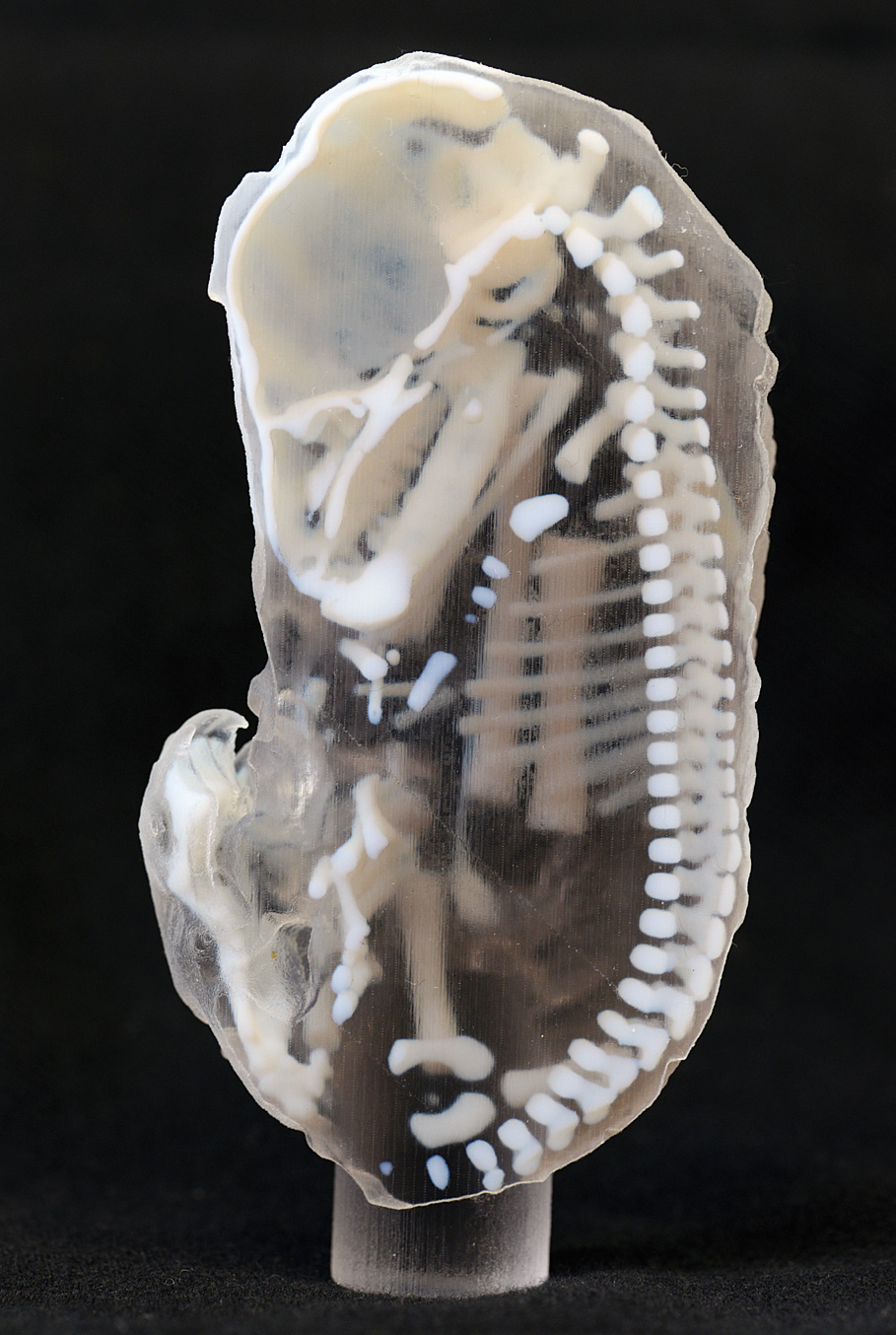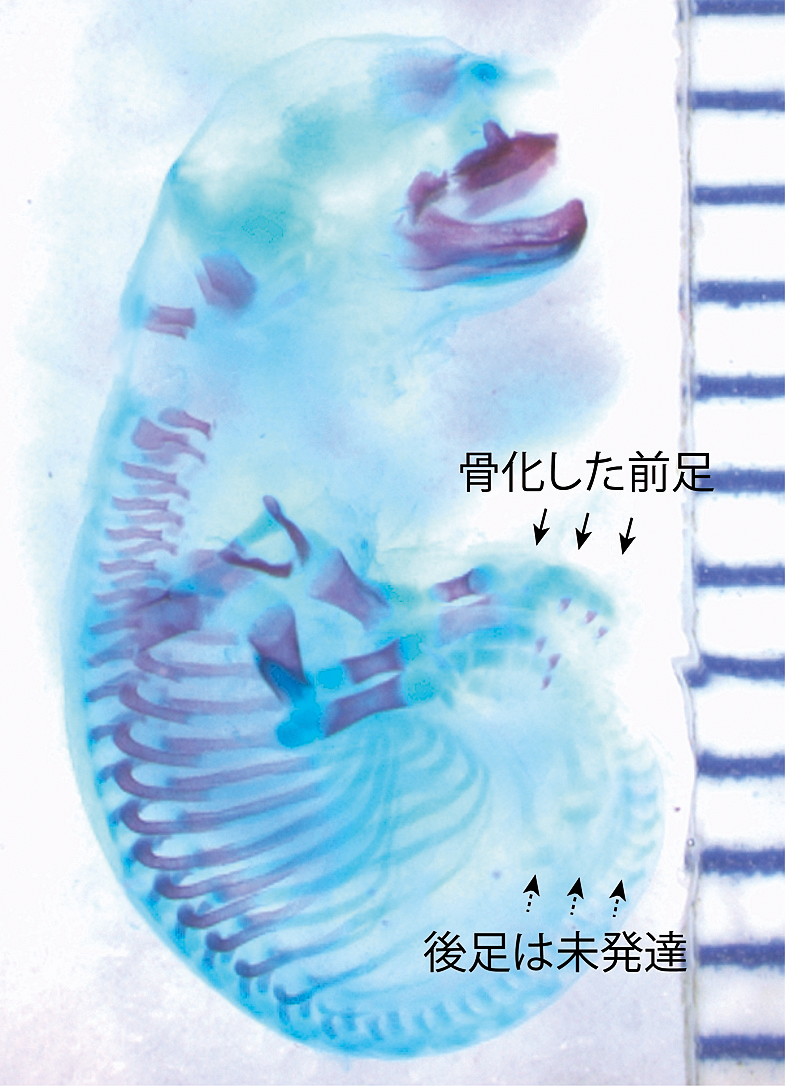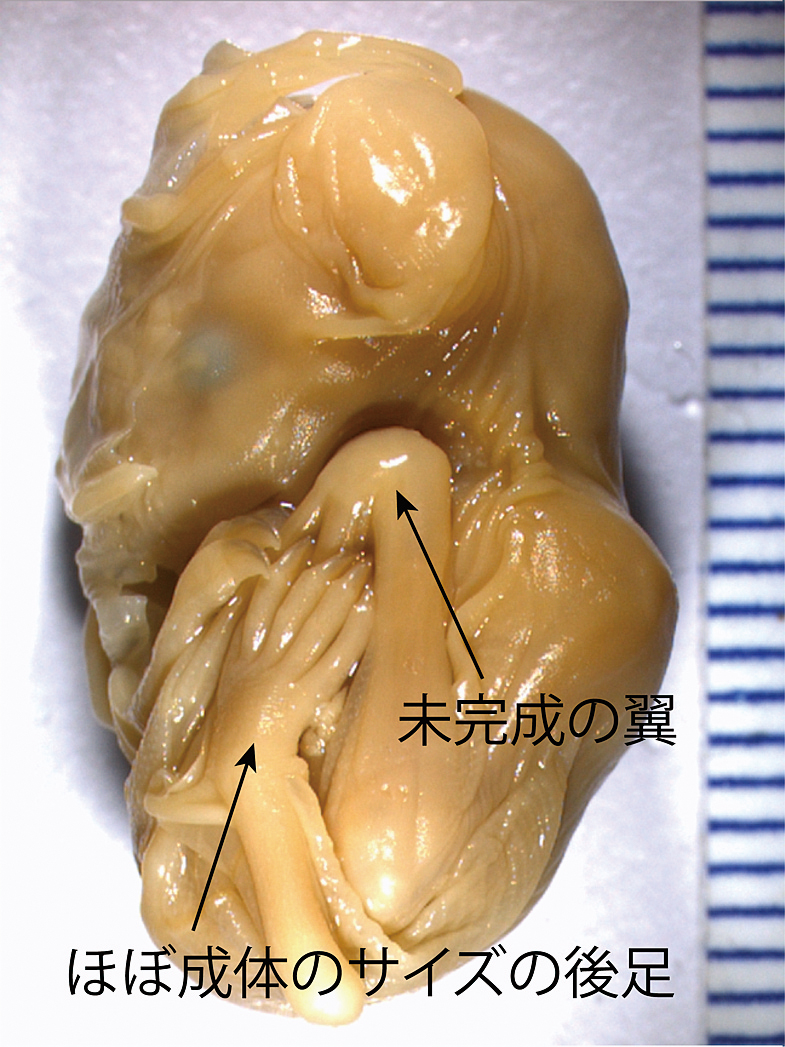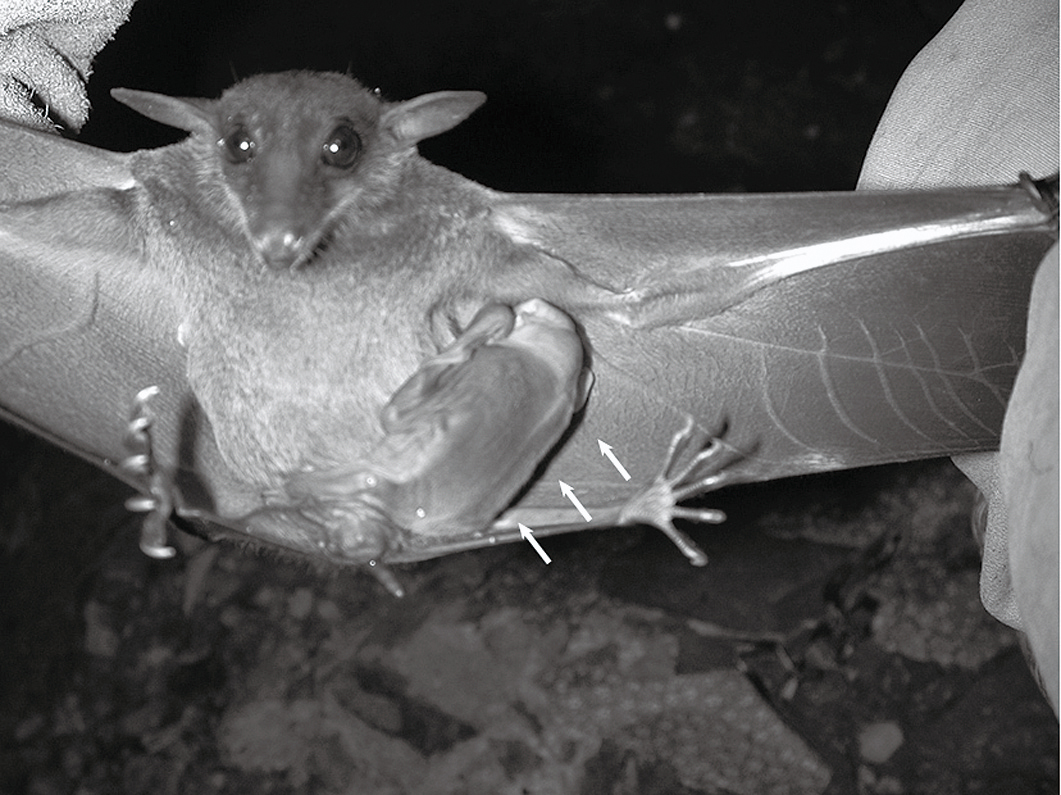B42
Fetuses of bats
life history and developmental pattern of the body
The figure is a late fetus of a common bent-wing bat (Miniopterus schreibersii). Bats are the two rare vertebrate taxa which gained powered flight. When we refer to bats, it is likely to firstly imagine about their unique wings, which is homologous to the carpal of other mammals. However, while bats acquired their unique wings, drastic changes occurred also within their foot. The author’s recent works shed light on the peculiar bone development of bats which coevolved with the gain of powered flight. The author’s comparative investigations on fetal development among mammals show that bats are highly unique among mammals that their foot development is significantly shifted earlier. The forelimb and hindlimb start to ossify nearly simultaneously in most mammals. The foot length of bat newborns are about 90% long of their mothers’, indicating that they are already equipped with a well-developed foot at the time of birth. 90% long is a striking length, since this means that in case of humans the foot of a baby born from a mother, whose foot is 25 cm long, is nearly 23 cm long. Thus, newborn bats do have enormously large foot. The reason for this is tightly linked to the evolution of flight. Although flight is an easy matter for adults, this is an impossible matter for newborns. The wing needs to reach a certain size to be capable of flying. And, that takes much time. It takes almost three weeks for microbats, and nearly three months for megabats until the first flight takes place. Until the wings become well developed, the newborns are required to continuously cling to their mother. Here the foot is utilized to tightly attach to their mothers. In order to be able to cling to their mothers just after birth, the foot needs to be fully functional at that time. Since the functionality of the foot is highly critical than the wing for newborns, developmental investment is allocated to the foot, resulting in the earlier initiation of foot formation in bats. This evolutionary case tells us that there is a developmental trade-off between foot development and flight evolution. (Daisuke Koyabu)
References
Koyabu, D. & Son, N. T. (2014) Patterns of postcranial ossification and sequence heterochrony in bats: life histories and developmental trade-offs. Journal of Experimental Zoology Part B: Molecular and Developmental Evolution 322: 607–618.




